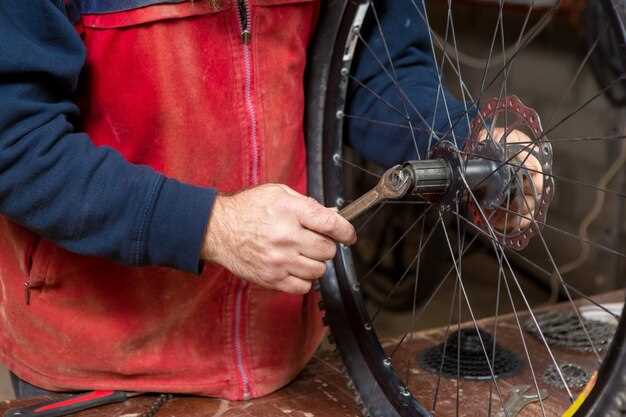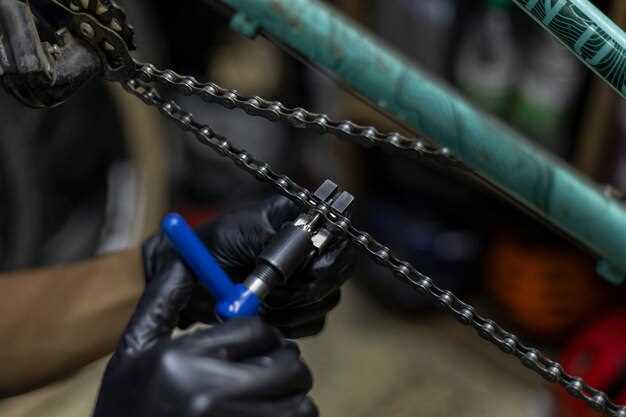
For motorcycle enthusiasts, ensuring the longevity and performance of your bike is crucial. One of the most vital components that contributes to a smooth ride is the chain and sprocket system. These parts are responsible for transferring power from the engine to the rear wheel, making their maintenance essential for optimal functionality.
Sprockets play a significant role in this mechanism, as they work in tandem with the chain to create a seamless connection between the engine and the wheels. Regular maintenance not only enhances the efficiency of your motorcycle but also prolongs the life of these critical components. A well-maintained chain and sprocket set can lead to improved handling, reduced wear, and ultimately, a safer ride.
In this article, we will explore effective maintenance tips that every motorcycle owner should know. From proper cleaning techniques to timely replacements, understanding how to care for your chain and sprockets can significantly impact your riding experience. Let’s dive into the essential practices that will keep your motorcycle running smoothly and efficiently.
How to Clean Your Motorcycle Chain Properly

Maintaining your motorcycle chain is essential for ensuring optimal performance and longevity. Regular cleaning helps prevent wear on both the chain and the sprockets, ultimately enhancing your riding experience. Follow these steps to clean your motorcycle chain properly.
1. Gather the Necessary Tools: Before starting, collect a chain cleaner, a stiff brush or chain scrubber, lubricant, and a clean rag. Make sure you wear gloves to protect your hands from dirt and chemicals.
2. Prepare Your Motorcycle: Park your motorcycle on a level surface and ensure it is stable. Using a paddock stand can make the process easier as it allows the rear wheel to spin freely.
3. Clean the Chain: Apply the chain cleaner to the entire length of the chain. Allow it to penetrate for a few minutes to loosen dirt and grime. Take the stiff brush or chain scrubber and gently scrub the chain, focusing on the rollers and side plates. Rotate the wheel to expose the entire chain as you clean.
4. Rinse Thoroughly: After scrubbing, rinse the chain with water to remove any remaining cleaner and grime. Ensure that no residue is left on the chain as it can cause damage over time.
5. Dry the Chain: Use a clean rag to wipe the chain thoroughly, removing excess moisture. It is crucial that the chain is completely dry before applying any lubricant to prevent attracting dirt.
6. Lubricate the Chain: Once the chain is dry, apply a suitable motorcycle chain lubricant. Spray or apply the lubricant evenly along the chain while slowly rotating the wheel. Focus on the inner side of the chain where contact with the sprockets occurs to ensure comprehensive coverage.
7. Wipe Off Excess Lubricant: After lubrication, use a clean rag to wipe off any excess lubricant. This prevents dirt accumulation and keeps your motorcycle cleaner for longer.
8. Inspect the Chain: Finally, check for signs of wear, rust, or tight spots. Regular inspection can help you catch issues before they lead to more extensive damage.
By following these steps regularly, you can maintain your motorcycle chain effectively, ensuring smooth operation and extending the life of both the sprockets and the chain itself.
Signs of Worn Sprockets and How to Replace Them
Worn sprockets can lead to poor performance and increased wear on your chain. It is essential to recognize the signs of degradation to maintain optimal functionality. The following indicators can help determine if your sprockets need replacement.
First, look for visible wear on the teeth of the sprockets. If the teeth appear hooked, pointed, or excessively rounded instead of having a flat profile, this is a sign of wear. Additionally, check for missing or broken teeth, which can lead to chain skipping and inefficient power transfer.
Another sign is unusual noise during operation. If you hear grinding or clinking sounds, it may indicate that the chain is not properly seating on the sprockets due to wear, leading to ineffective engagement.
Monitoring the chain’s fit on the sprockets is crucial. If the chain sits too loosely or has noticeable slack, it may not be properly engaging, leading to slippage. Over time, this can worsen the condition of both the chain and the sprockets.
If you notice any of these signs, it is crucial to replace the sprockets promptly. To replace them, first, ensure you have the correct tools, such as a sprocket removal tool and a wrench. Begin by cleaning the area around the sprockets to avoid contamination.
Next, carefully detach the chain from the existing sprocket. Take note of how the chain is linked to the sprocket for proper reinstallation later. Remove the bolts or fasteners securing the sprocket to the hub or axle. Install the new sprocket in the same orientation, ensuring it fits snugly against the hub.
Reconnect the chain, ensuring proper alignment between the chain and the new sprocket. Finally, check the tension and adjust as necessary, ensuring smooth operation. Regular maintenance and timely replacement will enhance the longevity of both sprockets and chain.
Choosing the Right Lubricant for Your Chain

Selecting the right lubricant for your motorcycle chain is crucial for maintaining performance and prolonging its lifespan. The lubricant you choose can significantly affect how smoothly your chain operates, its resistance to wear, and overall efficiency.
There are different types of chain lubricants available on the market, each designed for specific conditions. For instance, wet lubricants contain oils that adhere well to surfaces, making them ideal for wet environments. They provide excellent rust protection and keep the chain functioning optimally in rainy conditions. However, they can attract dirt and grime, so regular cleaning is necessary.
On the other hand, dry lubricants are lighter and less sticky. They are perfect for dry, dusty conditions as they repel dirt, keeping the chain clean for longer. These lubricants typically contain a mixture of oil and a solvent, which evaporates after application, leaving a thin film of wax or PTFE. This can help reduce friction and wear.
When choosing a lubricant, consider the type of riding you do. If you frequently ride in diverse weather conditions, a versatile lubricant that can withstand both wet and dry environments may be more suitable. Always consult your motorcycle’s owner manual for manufacturer recommendations, as specific chains may require certain types of lubricants to maintain warranty coverage.
Additionally, it’s important to apply the lubricant correctly. Clean the chain thoroughly before application to ensure that the lubricant bonds effectively with the metal surface. This will allow for a smoother ride and reduce the likelihood of premature chain wear. Regular maintenance and proper lubrication are key to ensuring your motorcycle chain remains in excellent condition.
